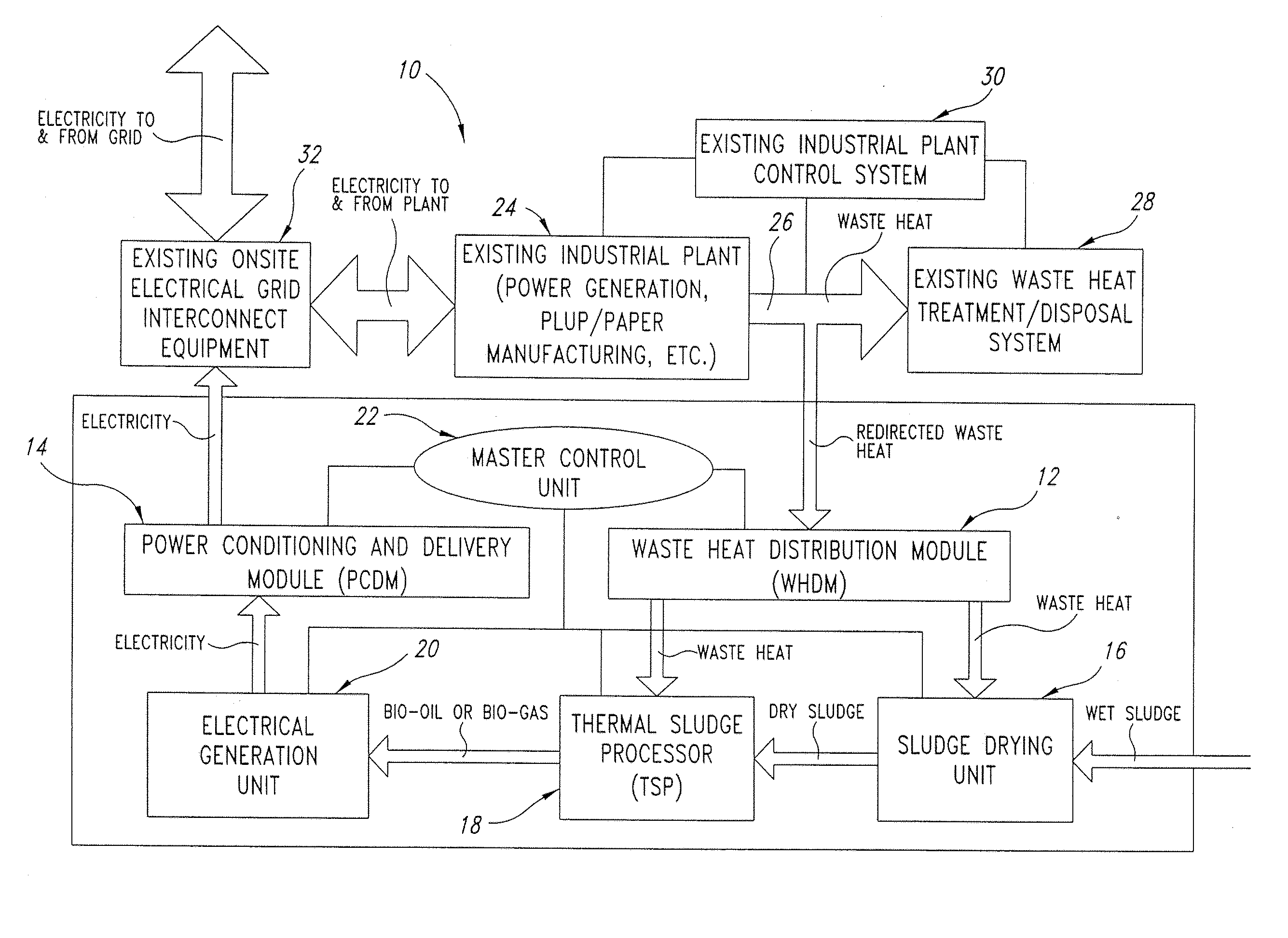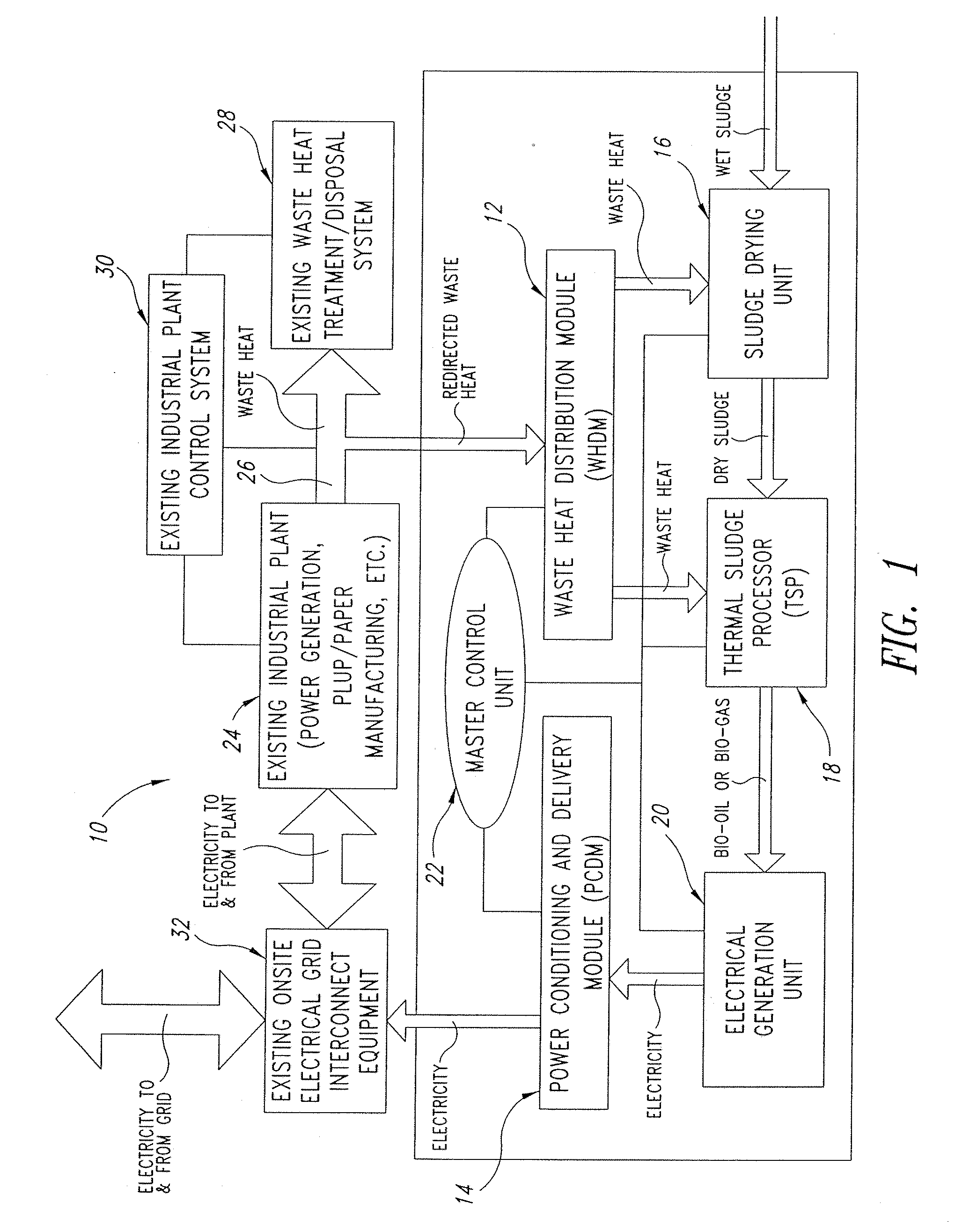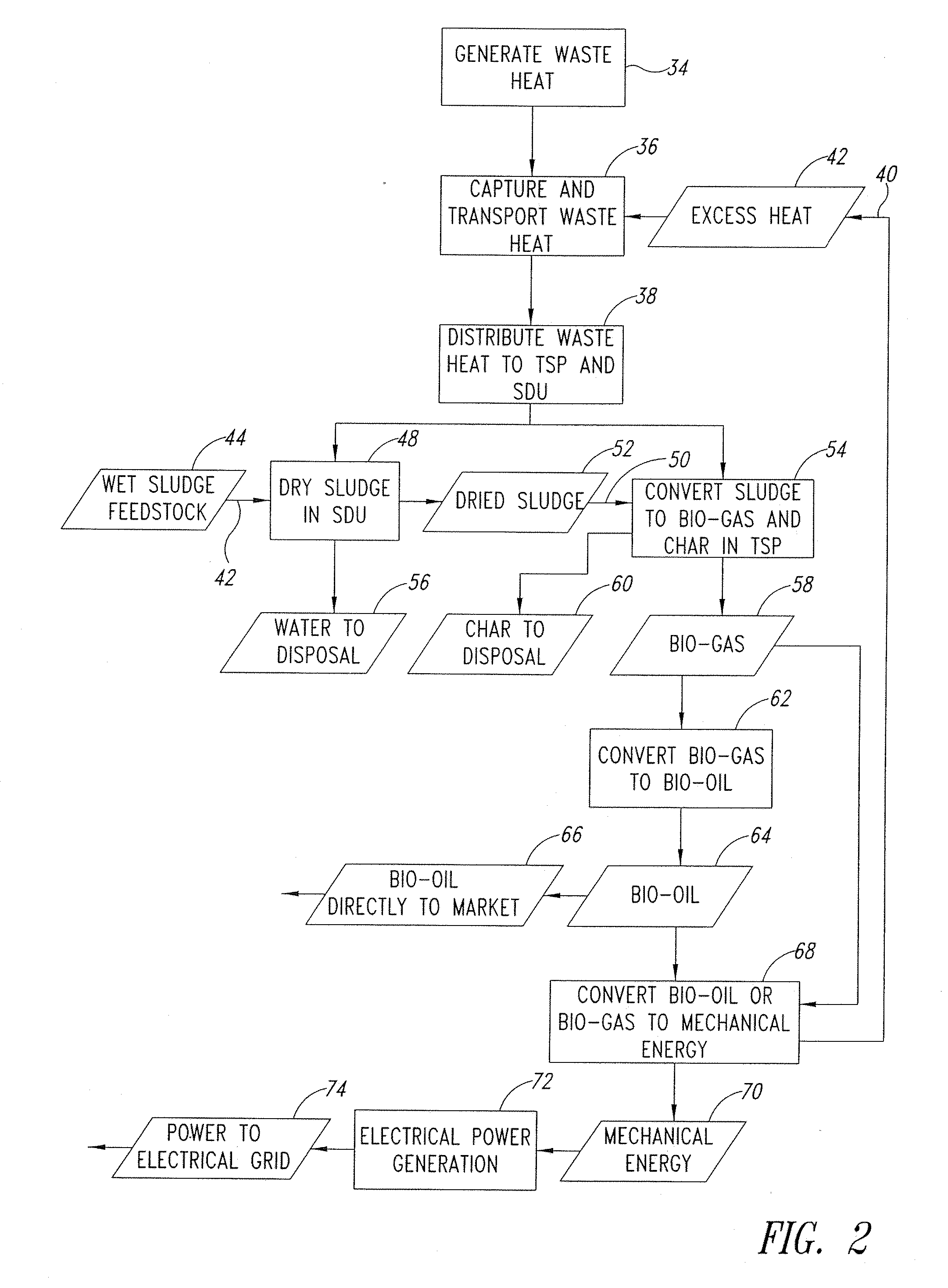Systems and Methods for Utilization of Waste Heat for Sludge Treatment and Energy Generation
a technology of waste heat and sludge treatment, applied in the direction of energy input, energy based wastewater treatment, drying machines, etc., can solve the problems of significant disposal problems, nuclear power plants and other heat-producing facilities or processes,
- Summary
- Abstract
- Description
- Claims
- Application Information
AI Technical Summary
Benefits of technology
Problems solved by technology
Method used
Image
Examples
Embodiment Construction
[0031] Many facilities generate waste heat that can be harmful to the environment if not properly treated before disposal. A number of processes requiring energy could benefit from the use of such waste heat. The disclosed embodiments according to the present invention provide a combination of systems and methods to efficiently dry sludge and / or to generate energy from sludge using waste heat. In one embodiment, as shown in FIG. 1, a system 10 or method for utilizing waste heat to dry sludge and generate energy includes a Waste Heat Distribution Module (WHDM) 12, a Power Conditioning and Delivery Module (PCDM) 14, a Sludge Drying Unit (SDU) 16, a Thermal Sludge Processor (TSP) 18 and an Electrical Generation Unit (EGU) 20. All of the above devices can be integrated via a Master Control Unit (MCU) 22 into a single process designed to safely dispose of waste heat and dry de-watered sludge while generating surplus energy.
[0032] In one embodiment according to the present invention, an ...
PUM
| Property | Measurement | Unit |
|---|---|---|
| electric power | aaaaa | aaaaa |
| heat | aaaaa | aaaaa |
| power | aaaaa | aaaaa |
Abstract
Description
Claims
Application Information
 Login to View More
Login to View More - R&D
- Intellectual Property
- Life Sciences
- Materials
- Tech Scout
- Unparalleled Data Quality
- Higher Quality Content
- 60% Fewer Hallucinations
Browse by: Latest US Patents, China's latest patents, Technical Efficacy Thesaurus, Application Domain, Technology Topic, Popular Technical Reports.
© 2025 PatSnap. All rights reserved.Legal|Privacy policy|Modern Slavery Act Transparency Statement|Sitemap|About US| Contact US: help@patsnap.com



